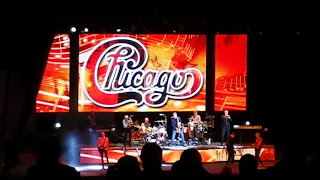Giant Saguaro Cactus,
The symbol of the Sonora Desert
Copyright © 2017
by Ralph F. Couey
Since coming here with my Dad in my youth, I have long had an affection for the desert southwest. To me, it has always been a land without limits; a wide open sky surrounded by a horizon that seems to go on forever. The land is mostly flat, but dotted by mountains that seem to spring up suddenly from the desert floor, some of which have been sculpted over the centuries into strange and inscrutable shapes.
It's tempting to call this land "empty." There are none of the thick hardwood forests of the northeast, or the streams and rivers of the midwest. Birdsong, the joyous soundtrack of any woodland hike, won't be found here in abundance. In my hikes thus far, the only birds I've heard have been the squawking cry of the huge Chihuahuan Raven and the somber, sad plaint of the mourning dove. But the land teems with life. You have to know where to look.
Twenty to Forty million years ago, the Sonora Desert was a hotbed of volcanic activity. The land holds that memory in the form of several giant caldera and signs of lava flows. Then the drift of continental plates began to stretch and pull the region apart. The crust crumbled into the the sudden uplifted mountains and hills that remain today. Mountains bordering what is now the desert, uplifted high enough to cut off the flow of moisture from the Pacific Ocean. The land dried out and plantlife over time adapted to the new climate. The air sinks into the desert basin, compressing and heating. Unrelieved by moisture, the heat in this region can reach into the 120-degree range, as it did last week. But nature is adaptive, and in the hot sands, plants such as the Giant Saguaro and the Organ Pipe cacti flourish. Sagebrush (not related to the herb sage in any way) also covers the ground. Rather than being empty, the land is full of animal life. Coyotes, chipmunks, jackrabbits, javelina, rattlesnakes, Gila Monsters all live in the desert. In addition the smaller critters, seemingly dozens of types of flies, spiders (especially the black widow and tarantula), scorpions reside here as well. The large number of venomous creatures will demand close attention of the terrain by human hikers.
This is a harsh land, not for those of weak constitutions. The heat during the summer months, and the epic thunderstorms and flash floods that occur during the July monsoon pose dangers to people. The land doesn't absorb much moisture, so when it rains, just about all the water becomes runoff. Dry gullies can become raging torrents. Streets and roads can become flooded in a matter of minutes. Early settlers understood this, and the descriptive names like Skull Valley, Rough Rock, Tombstone, and Bitter Springs tell a history of their own.



